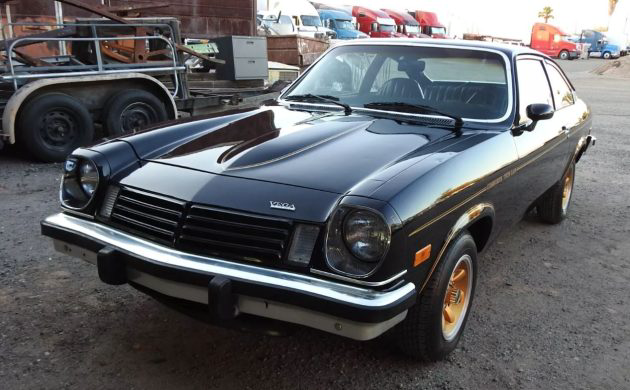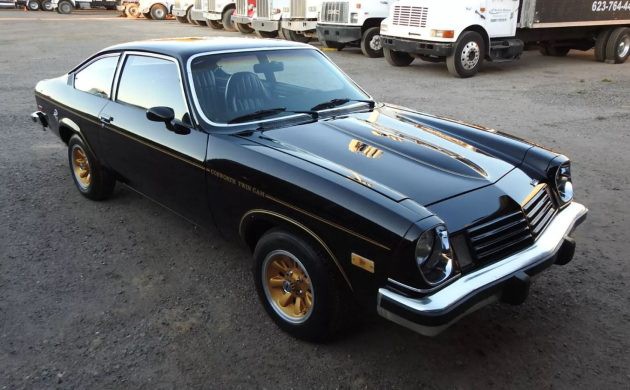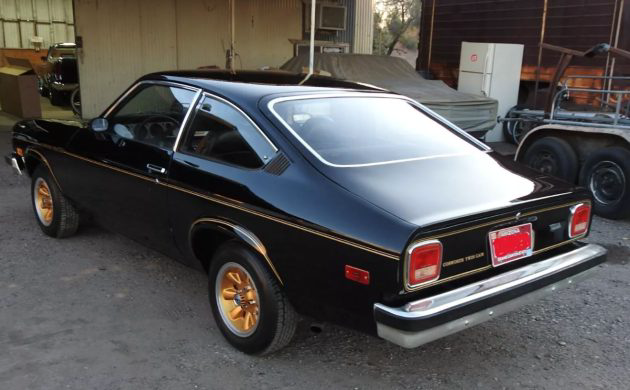It is common for vehicle manufacturers to collaborate with third-party companies to produce limited-edition vehicles. Chevrolet walked that path to inject excitement into its Vega range, enlisting the help of an engineering firm with Formula One credentials to create the Cosworth Vega. It envisaged a low-volume vehicle, but faltering sales resulted in a lower production run than anticipated. Our feature car is a first-year example of a dry climate survivor. It has a few minor shortcomings but could be ideal for someone seeking a classic that allows scope for straightforward restoration tasks.
Chevrolet introduced the Cosworth to its Vega range in 1975. It planned a production run of 5,000 cars, but the final tally fell well short of that figure. Our feature car emerged in 1975 and is finished in the stunning Black that cloaked the exterior of all Cosworths produced during that year. It holds an impressive shine, especially considering the seller claims this beauty is original and unrestored. Some close-up shots reveal minor flaws and imperfections. However, the Vega remains presentable, and a reputable shop could address the shortcomings with touch-ups rather than undertake a complete repaint. The distinctive Gold stripes and decals look surprisingly good for their age, although replacement kits are available and affordable if an in-person inspection reveals problems. The best news with this Cosworth may hide below the surface. The entire Vega range earned a reputation for rust problems, and the Cosworth variant wasn’t immune. This vehicle spent its whole life in Arizona, and that state’s climate is ideal for steel preservation. The seller doesn’t mention a history of rust, and nothing is visible in the supplied photos. The glass is crystal clear, and the Vega retains all five of its unique alloy wheels.
With its shredded front seatcovers, faded carpet, and cracked dashpad, this Vega’s interior doesn’t make a positive first impression. This is unfortunate because the remaining Black vinyl upholstered surfaces look surprisingly good for their age. The pad’s failure is understandable, having fallen victim to harsh sunlight. However, the seats are a greater mystery. Replacement covers retail for around $450 per set, and I located a company selling reproduction pads for under $300. A new carpet set adds $280 to the tally, but if the new owner buys and installs those items, the interior would really “pop.” There are no aftermarket additions beyond the shifter knob, with this classic retaining its original AM/FM radio.
Lifting the hood reveals what separates these classics from every other vehicle in the Vega range. Chevrolet wished to inject excitement into the range, and a high-performance variant was the answer. It enlisted Cosworth Engineering to develop a twin-cam cylinder head to bolt to an alloy engine block. The 1,994cc four received fuel injection and stainless headers and pumped out over 200hp in early bench tests. However, problems were awaiting Chevrolet. The prototype engines comprehensively failed emission tests, and the changes required to address the issues dropped power and torque to 110hp and 107 ft/lbs. To place those figures into perspective, the Vega GT delivered 87hp and 122 ft/lbs from its 2.3-liter powerplant. The Cosworth was a second faster over the ¼-mile, but many questioned the value for money equation with its sticker price perilously close to a Corvette’s. Chevrolet handbuilt engines for 5,000 Cosworths, but the final sales tally was a mere 3,508 cars. The company dismantled 500 engines to retain a stock of spares and scrapped the remaining powerplants. Potential buyers can consider this Vega a turnkey classic. The seller recently performed maintenance tasks that ensured the Cosworth is in sound mechanical health. They say it runs and drives nicely, making flying in and driving home a viable option.
The seller listed this 1975 Cosworth Vega here on eBay in Glendale, Arizona. They set their price at $10,000, which aligns with market expectations and recent sales results. These cars promised so much but were hampered by the high sticker price. Many succumbed to the rust issues that plagued the entire Vega range, although this car appears to have avoided those dramas. Tweaking its interior should be easy in a home workshop, and I would be unsurprised if this beauty found a new home fairly quickly. Are you tempted to make it yours?









Except for the wheels and pinstripe this car looks like a sleeper, although Cosworth Vega’s were not very fast. I owned a 1974 Vega GT, bought used in 1976. I was very busy then, (full time college student, worked full time, 11pm-7am, and newly engaged). I unfortunately never heard of the engine or rust problems. It was red with a black stripe running the center of the hood to the back of the car. It had a black vinyl seats with red piping, and rally wheels. It looked fast but wasn’t. I had to replace 3 heads in 9 months and traded it for a new 1977 base Nova with a 305 V-8.
My first new car was a 72 screaming orange Vega GT wagon with 4 speed. I liked the looks of the Kammback much better that the coupes. And it was way more practical for a college kid who could stuff all his earthly possessions into it. It ran fine, never succumbing to the common overheating problems. It had fiberglas-belted tires which were the performance tires before radials were commonly available.
The seats appear to have the “Jilted Lover” coverings. You had to someone at the dealership to get the “RPO JL0U812” option code
“Know” someone at the dealership… Get your minds out of the gutter.
Price increase to $12k
They upped the price to 12K now……hmmm
Easy to bring the 110 hp on these to 140-150. Remove the cat and swap the FI for a Weber carb setup. This gets the engine close to the prototype output. The prototypes were 170 gross (w/Weber carbs and no emissions equipment).
The F2 racing version of this engine was actually 270 HP. It ran 12:1 compression and a slightly longer duration camshaft. All of the internals, including the forged steel crank and rods and forged aluminum pistons are the exact same between street and racing versions. These engines rev quite impressively when the exhaust is uncorked…
A great idea for a car that failed to deliver in final form. A lot of extra cost for little additional performance. Too bad.
I’d a say 40% hp increase is hardly “little additional performance”. But hey, it’s only math right??
Compared to many other cars in its time, including BMW 2002, etc., even the stock car didn’t “fail to deliver”. And no, that’s not for the guy that can’t do simple math. It’s for the rest of the folks here that actually care about cars other than 1970 Chevelllle ellllesssssixxesss